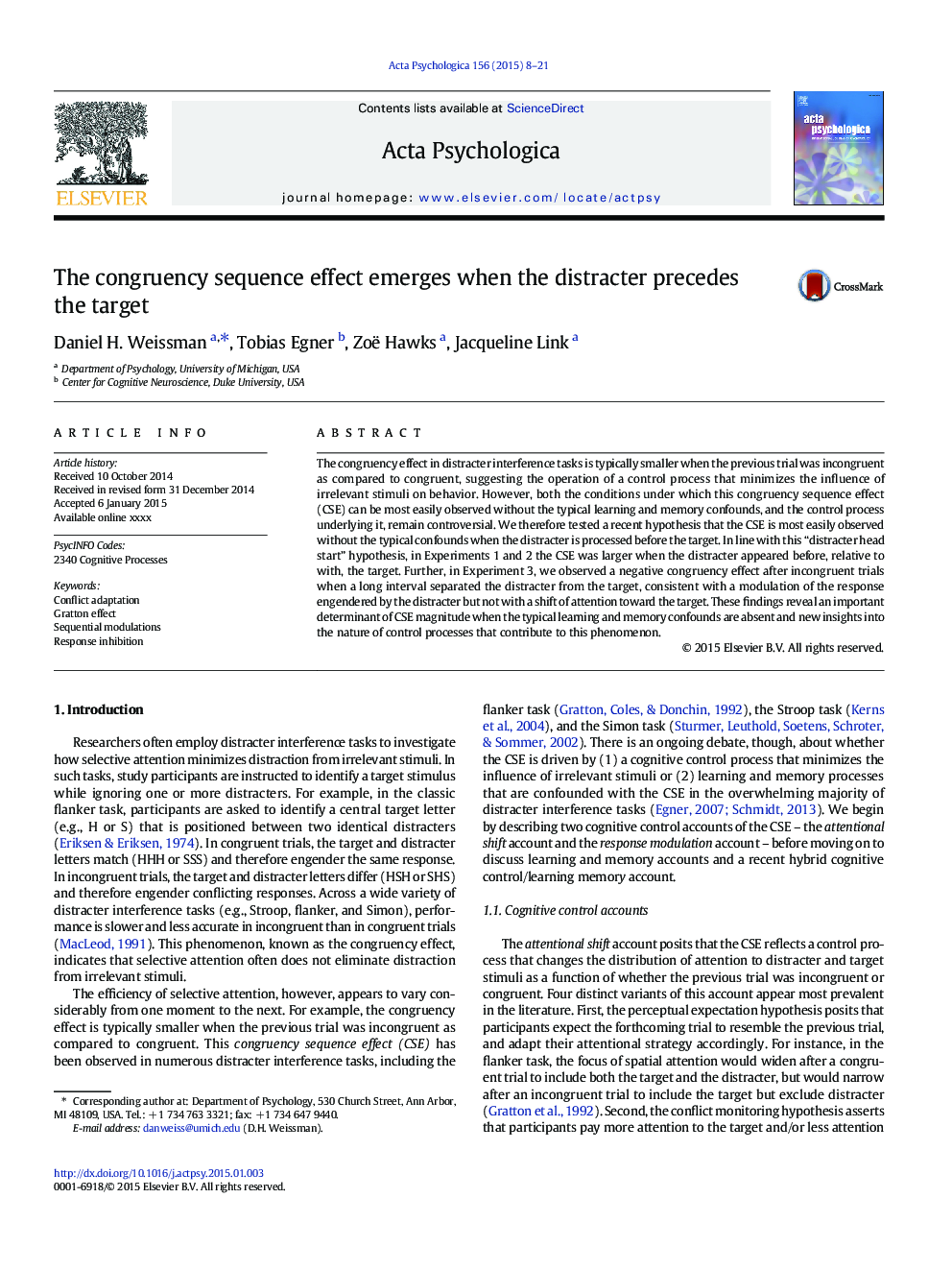| Article ID | Journal | Published Year | Pages | File Type |
|---|---|---|---|---|
| 7277425 | Acta Psychologica | 2015 | 14 Pages |
Abstract
The congruency effect in distracter interference tasks is typically smaller when the previous trial was incongruent as compared to congruent, suggesting the operation of a control process that minimizes the influence of irrelevant stimuli on behavior. However, both the conditions under which this congruency sequence effect (CSE) can be most easily observed without the typical learning and memory confounds, and the control process underlying it, remain controversial. We therefore tested a recent hypothesis that the CSE is most easily observed without the typical confounds when the distracter is processed before the target. In line with this “distracter head start” hypothesis, in Experiments 1 and 2 the CSE was larger when the distracter appeared before, relative to with, the target. Further, in Experiment 3, we observed a negative congruency effect after incongruent trials when a long interval separated the distracter from the target, consistent with a modulation of the response engendered by the distracter but not with a shift of attention toward the target. These findings reveal an important determinant of CSE magnitude when the typical learning and memory confounds are absent and new insights into the nature of control processes that contribute to this phenomenon.
Related Topics
Life Sciences
Neuroscience
Cognitive Neuroscience
Authors
Daniel H. Weissman, Tobias Egner, Zoë Hawks, Jacqueline Link,
